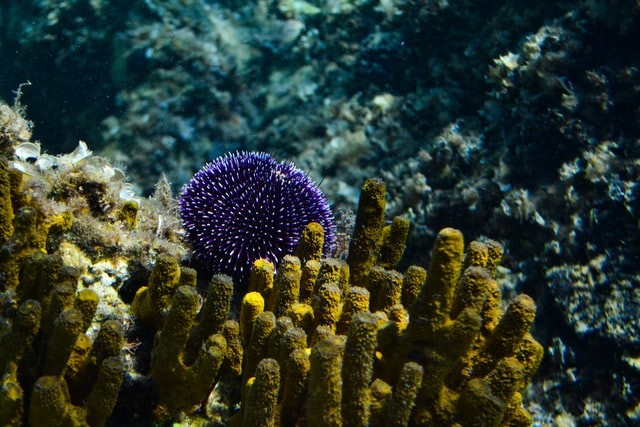Purple sea urchins are devouring California's kelp forests at a rate and size that has scientists, fishermen, and divers equally baffled.
However, red and purple urchins have long lived in kelp forests, indicating that the three species may coexist.
UC Santa Barbara researchers wanted to know what causes disrupted this equilibrium.
A new study conducted by the University of California, Santa Cruz (UCSC) discovered that a dramatic outbreak of kelp-eating sea urchins along California's Central Coast in 2014, which resulted in a significant reduction in the region's kelp forests, was primarily caused by the emergence of sea urchins from their hiding spots, rather than through increases in urchin populations.
Urchin migrations helped kelp forests to regrow in regions where these predators had previously disappeared.
Sea Urchin eating Kelp

Why is it that in some locations, urchins kill kelp forests but in others, urchins and kelp can coexist? Adrian Stier, Associate Professor asked, as per ScienceDaily.
Their inquired investigation revealed what's going on behind the scenes. It provided a lot more clarity in describing when and where urchins could eat kelp.
This study, headed by Ph.D. students Mae Rennick and Bart DiFiore, has been published in the journal Ecology.
The authors used laboratory trials and 20 years of data collected to figure out what causes urchins to start to eat their way out of a house.
The findings showed that the availability of kelp scraps, or detritus, might be the decisive factor.
Rennick and DiFiore set out to put their theory to the test. They gathered purple and red urchins from the outdoors and returned them to their laboratory.
The researchers restricted nourishment from the urchins for roughly a week after acclimating them to the aquariums.
The researchers next supplied kelp to the various tanks, weighing it first before feeding, and 48 hours later for purple urchins and 96 hours for red urchins to see how kelp consumption varies with urchin density.
The researchers discovered how the urchins needed to consume from their experiment, and from the LTER data they learned how much debris the urchins may be eating, as well as urchin density and the quantity of live kelp at a given spot and time.
They were able to predict how much kelp purple and red sea urchins devoured at each place in the SBC LTER in a given year by combining the data with lab results.
Also Read: Sea Urchins in the Caribbean are Mysteriously Dying at Quick Rates
Sea Urchin's behavior
Most people would agree that we need to reduce the number of sea urchins, but it's also really important to consider the role of sea urchin behavior, according to study lead author Joshua Smith, a former doctoral student at UCSC and presently a postdoctoral fellow at the University of California, Santa Barbara, as per Fishbio.
A sequence of dramatic changes to California's kelp forest ecosystems started in 2013, when an epidemic of sea star wasting disease destroyed one of the key sea urchin predators, the sunflower sea star, according to Dr. Smith and his colleagues.
This was followed a year later by a large marine heatwave, which hampered kelp development and prepared the ground for an unparalleled sea urchin infestation on Monterey Bay's stony reefs, where kelp forests developed.
Related Article: Sea Urchins Adapting to Increased Oceanic Acidification
© 2024 NatureWorldNews.com All rights reserved. Do not reproduce without permission.

![Climate Change is Reducing Dust Levels Worldwide as Arctic Temperature Warms [Study]](https://1471793142.rsc.cdn77.org/data/thumbs/full/70320/280/157/50/40/climate-change-is-reducing-dust-levels-worldwide-as-arctic-temperature-warms-study.jpg)
![Tsunami Hazard Zones: New US Map Shows Places at Risk of Flooding and Tsunamis Amid Rising Sea Levels [NOAA]](https://1471793142.rsc.cdn77.org/data/thumbs/full/70325/280/157/50/40/tsunami-hazard-zones-new-us-map-shows-places-at-risk-of-flooding-and-tsunamis-amid-rising-sea-levels-noaa.jpg)


